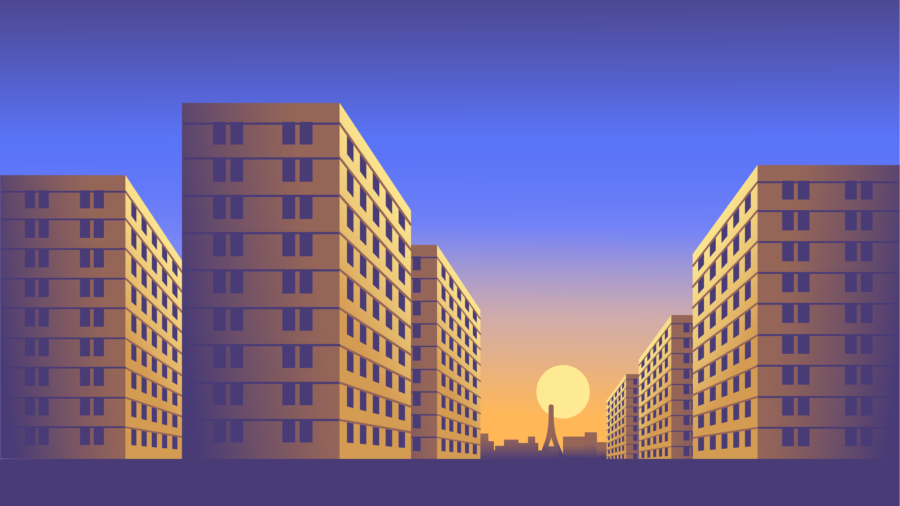
Receive free Life & Arts updates
We’ll send you a myFT Daily Digest email rounding up the latest Life & Arts news every morning.
Last Saturday evening, I went out to the eastern Parisian suburb of Bagnolet to watch the riots. The night before, demonstrators had burnt a wall of the local police station. The image spread across social media.
Working-class Bagnolet had elected communist mayors from 1928 until 2014. Today, like most Parisian suburbs, it’s inhabited by an array of ethnicities. You’d think it would be Ground Zero for the kinds of tensions that sparked the disturbances, which followed a policeman’s killing of Nahel Merzouk, a 17-year-old of North African descent.
But on Saturday, I couldn’t find any riots. Wandering around, I saw nothing more ominous than a security guard posted outside a kebab shop. There were houses as pretty as in any French village and a rainbow logo for Pride month was etched on the street. A minute’s walk from the police station, the café terraces of the Place du Centre were crowded with locals of all colours. I couldn’t resist: I sat down and had beer and charcuterie. The next day, I went to watch my sons’ football match in a nearby lower-middle-class suburb. It was another tranquil scene, with shoppers pottering around the covered food market.
Of course, the suburban riots caused terrible damage. Of course, Paris’s suburbs, or banlieues, are troubled. But what I’ve seen over years of visiting them is true too: countless suburbanites lead contented lives. And there are reasons to expect contentment to increase. All this matters immensely. About 10 million people live in the Parisian suburbs, compared with just 2.1 million in the city itself. Even leaving aside Paris proper, that makes the suburbs the EU’s largest metropolitan area.
The case for optimism about the Paris suburbs requires looking at more than just the videos of youths plundering shops and attacking their own buses, schools, town halls, et cetera. This wasn’t the “revolt of the suburbs”. It was rioting by some teenaged boys. The average age of those arrested was 17. And despite what the far-right says, these kids aren’t some foreign entity attacking French culture. To the contrary, nothing could be more Parisian than a street uprising.
Note also how suburban adults responded. Most were horrified by the violence, and many helped stop it. Think of the night patrols by parents in Champigny, the locals who used jugs or garden hoses to douse fires, the woman yelling at boys breaking into a school, “Not the school!”, the dad frogmarching his son away from a riot and sticking him in the car boot, or Nahel’s grandmother calling for the riots to stop. These people feel they have a stake in their suburbs.
And no wonder, because most suburbs have improved. In particular, they have become safer. The homicide rate of Paris and a few inner suburbs in 1994 was 4.8 per 100,000. Today, Greater Paris’s rate is 1.2, the same as London’s. New York City’s is 5.0. Meanwhile, unemployment in Greater Paris has dropped to 6.6 per cent, near a 15-year low. Many local employers cannot find enough staff.
Chronic French discrimination against ethnic minorities seems to be diminishing. “Tolerance” is at its highest since surveys began in 2008, reports the CNCDH, France’s National Commission for Human Rights. Emmanuel Macron expressed support for Nahel’s family by calling the killing “inexplicable” and “inexcusable”. By contrast, during the riots of 2005, the then government just stigmatised rioters .
Now France’s police need to learn tolerance too. Young men perceived as Arab or black were stopped for identity checks 20 times more often than other people, found a report in 2017. Nearly three-quarters of active police officers planned to vote far-right in last year’s presidential runoff, found a poll by Cevipof. The main police trade unions, instead of apologising for Nahel’s killing, called the rioters “savage hordes” and “vermin”. The quickest way to improve police-suburb relations would be to ban provocative identity checks, freeing police to focus on actual crimes, says French sociologist Patrick Weil. After New York City dropped “stop-and-frisk” in 2014, its crime rates for some years hit post-1950s lows.
Policing aside, Paris’s suburbs should keep improving. In what is Europe’s largest infrastructure project, the French state is building 68 suburban metro stations. Some will open for next year’s Olympics, and most by 2030. Along with the region’s planned 750km of new bike paths, the stations should finally knit together Paris and the suburbs. The separation between the two worlds — which often reminds me of the divide between white Johannesburg and black Soweto in the apartheid South Africa of my grandparents — might finally start fading. I’m betting on the banlieues.
Follow Simon on Twitter @KuperSimon and email him at [email protected]
Follow @FTMag on Twitter to find out about our latest stories first